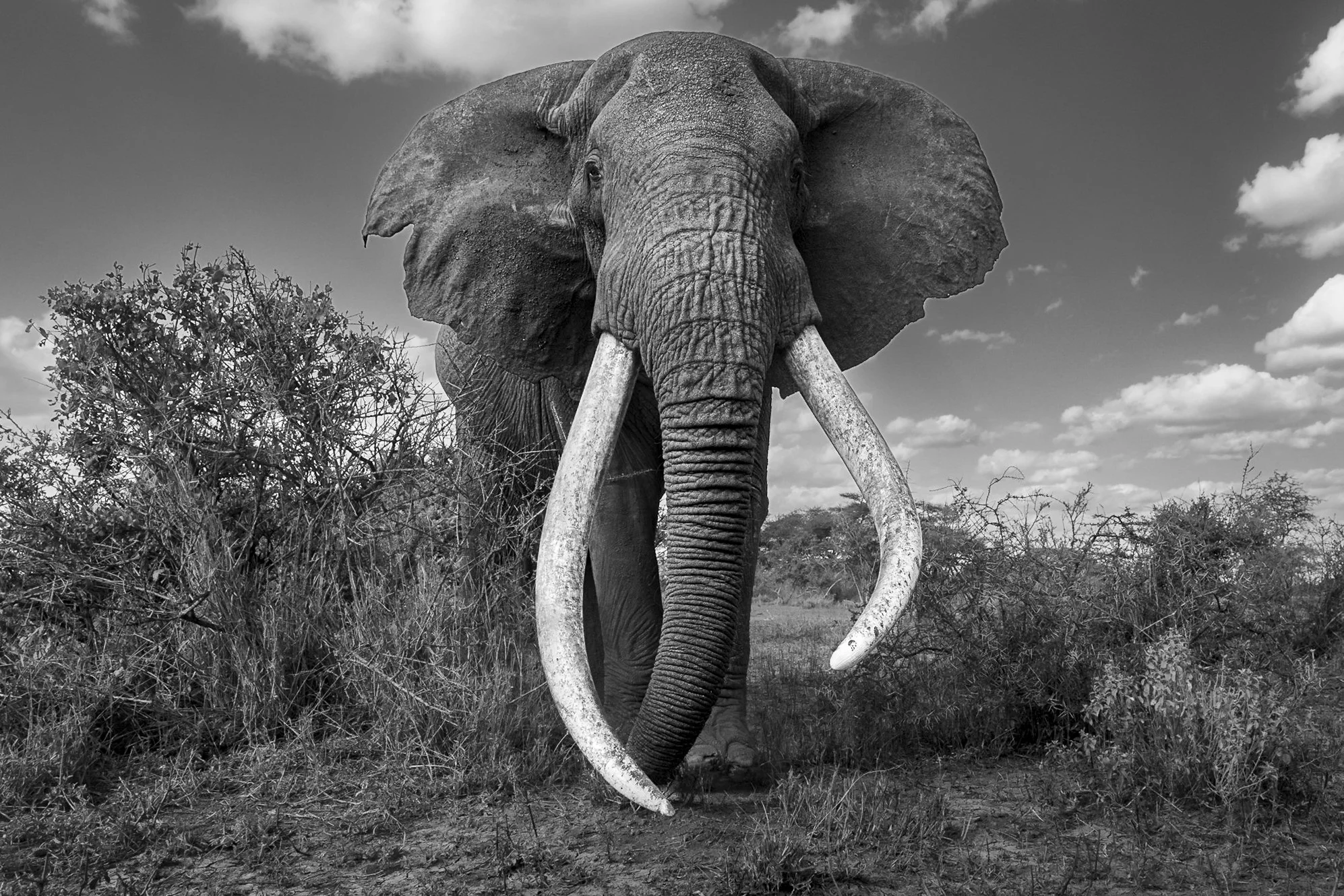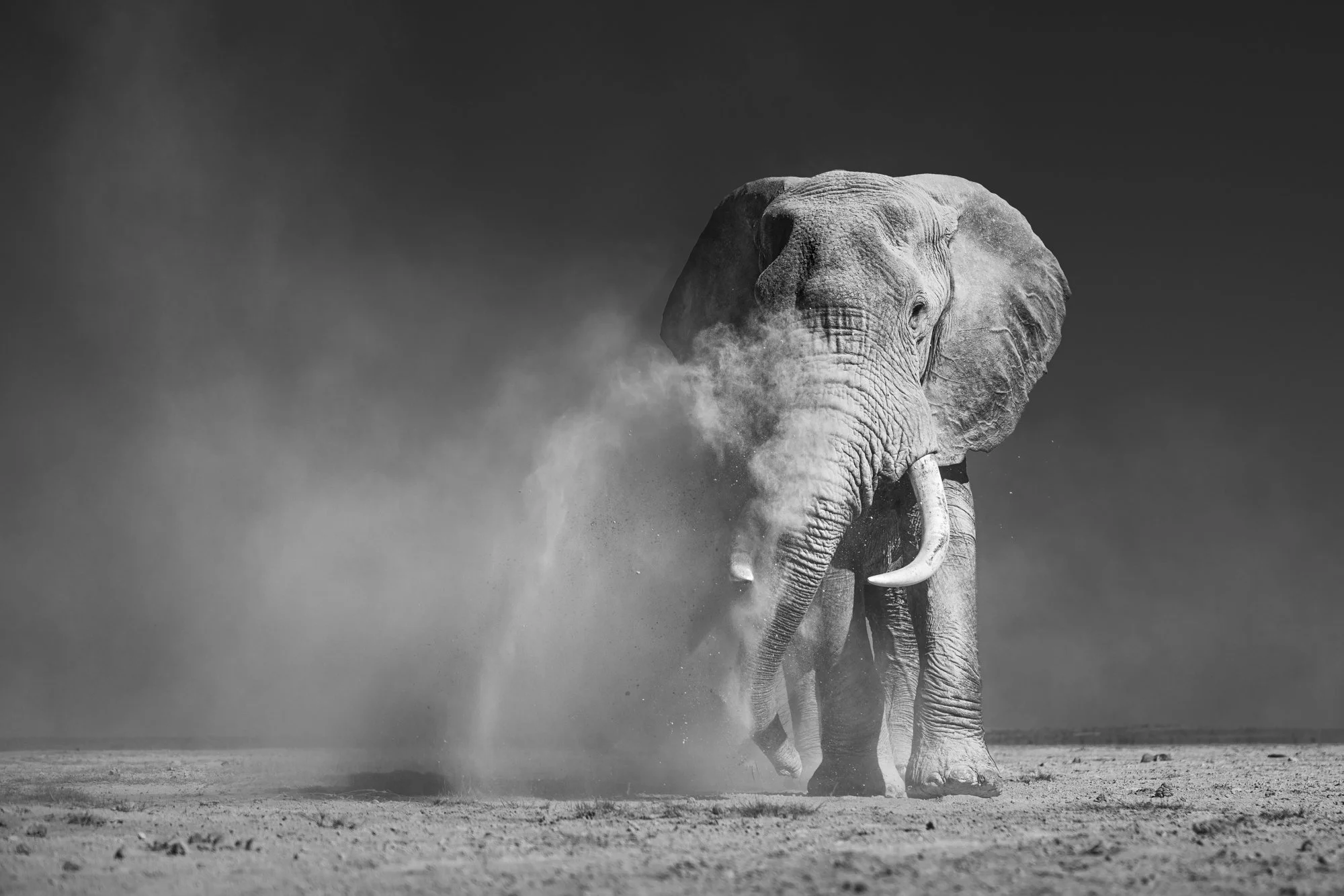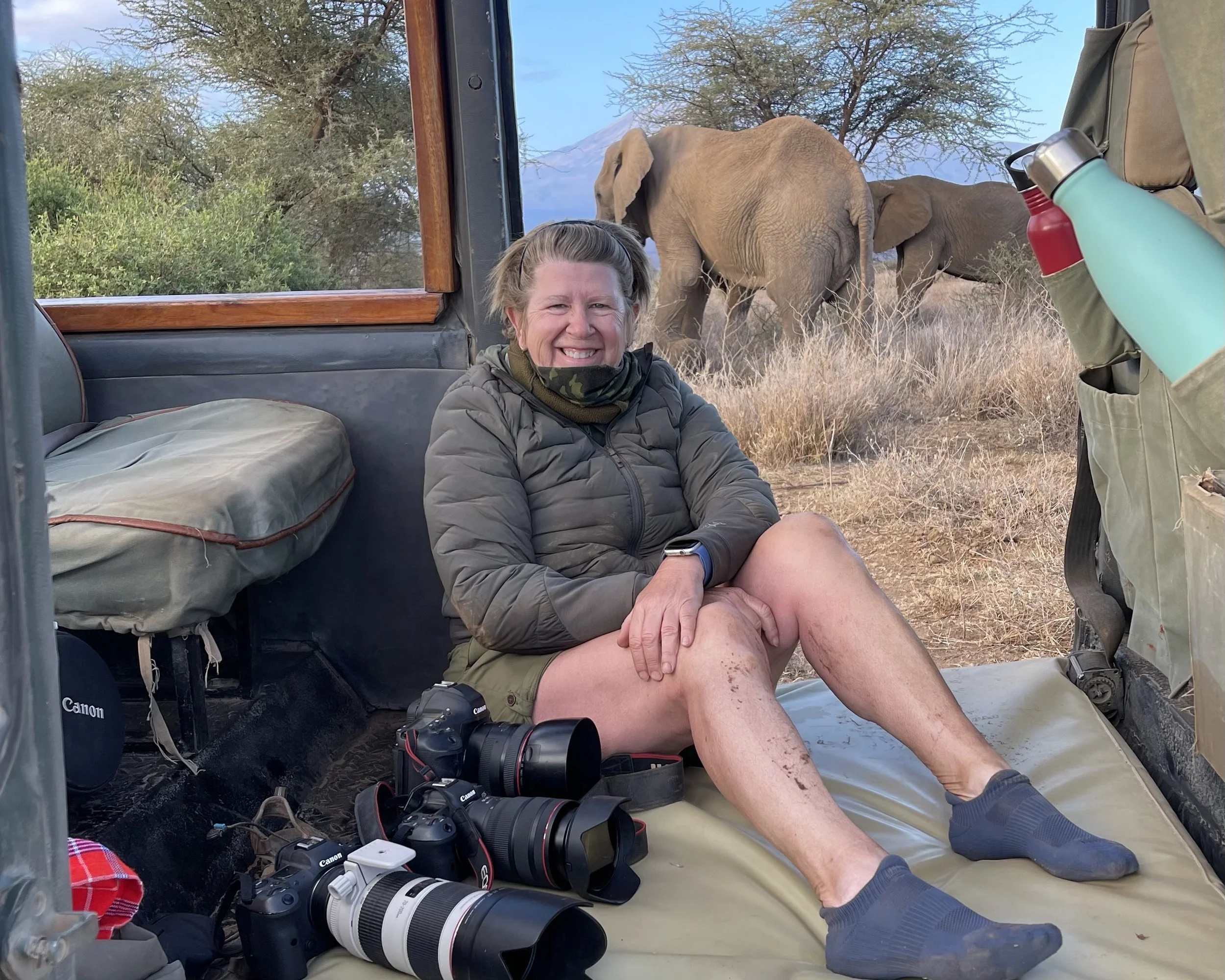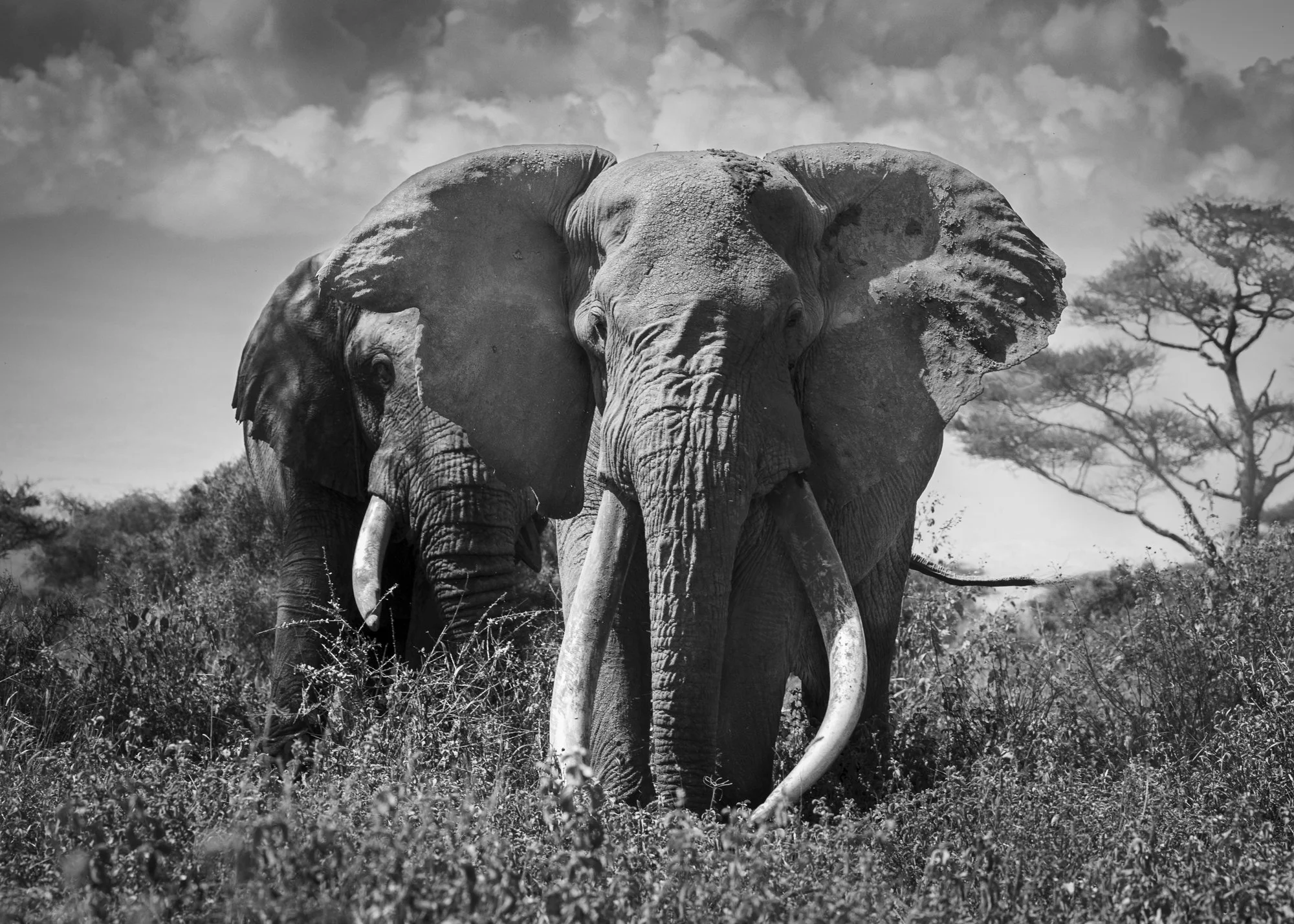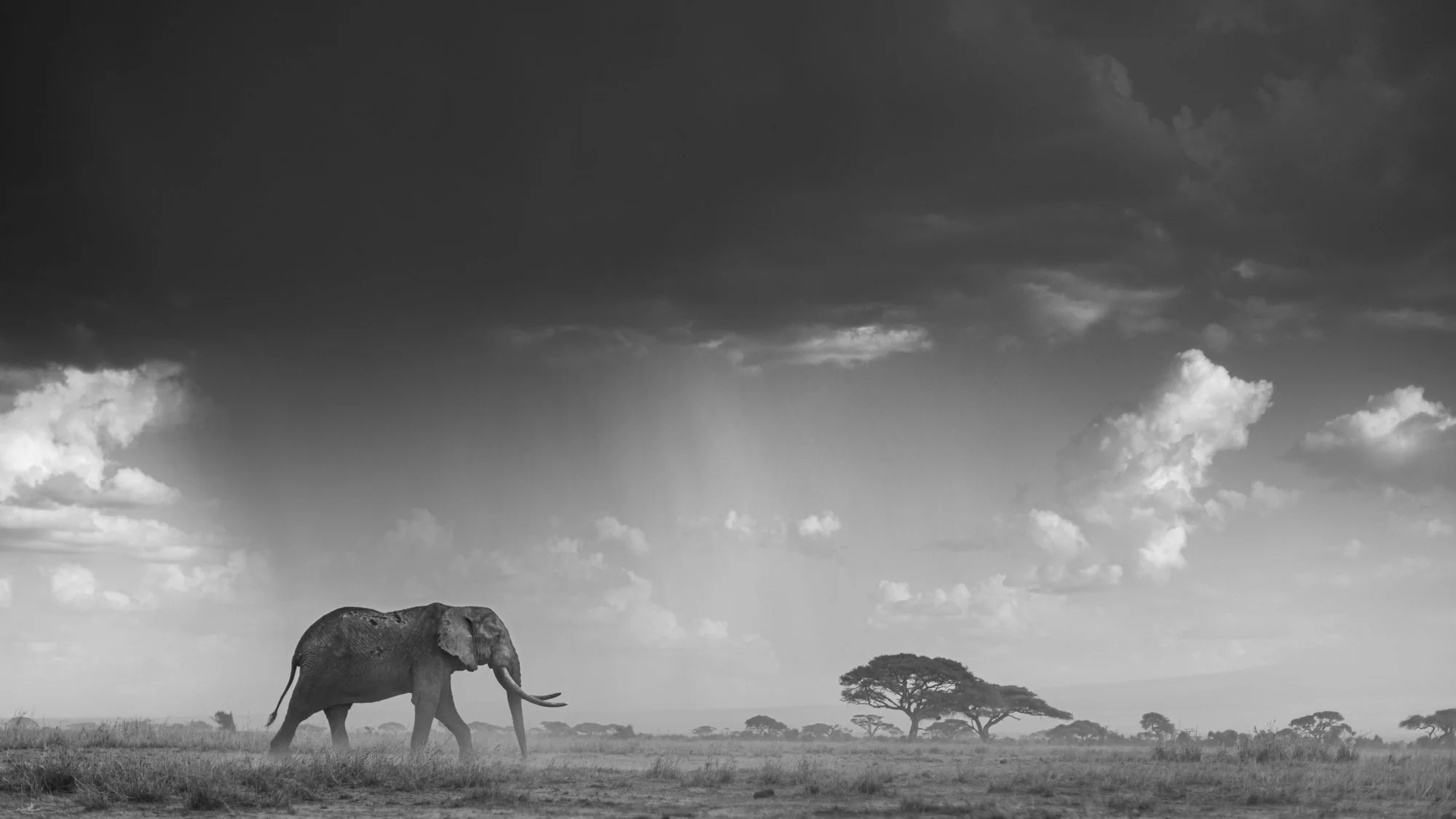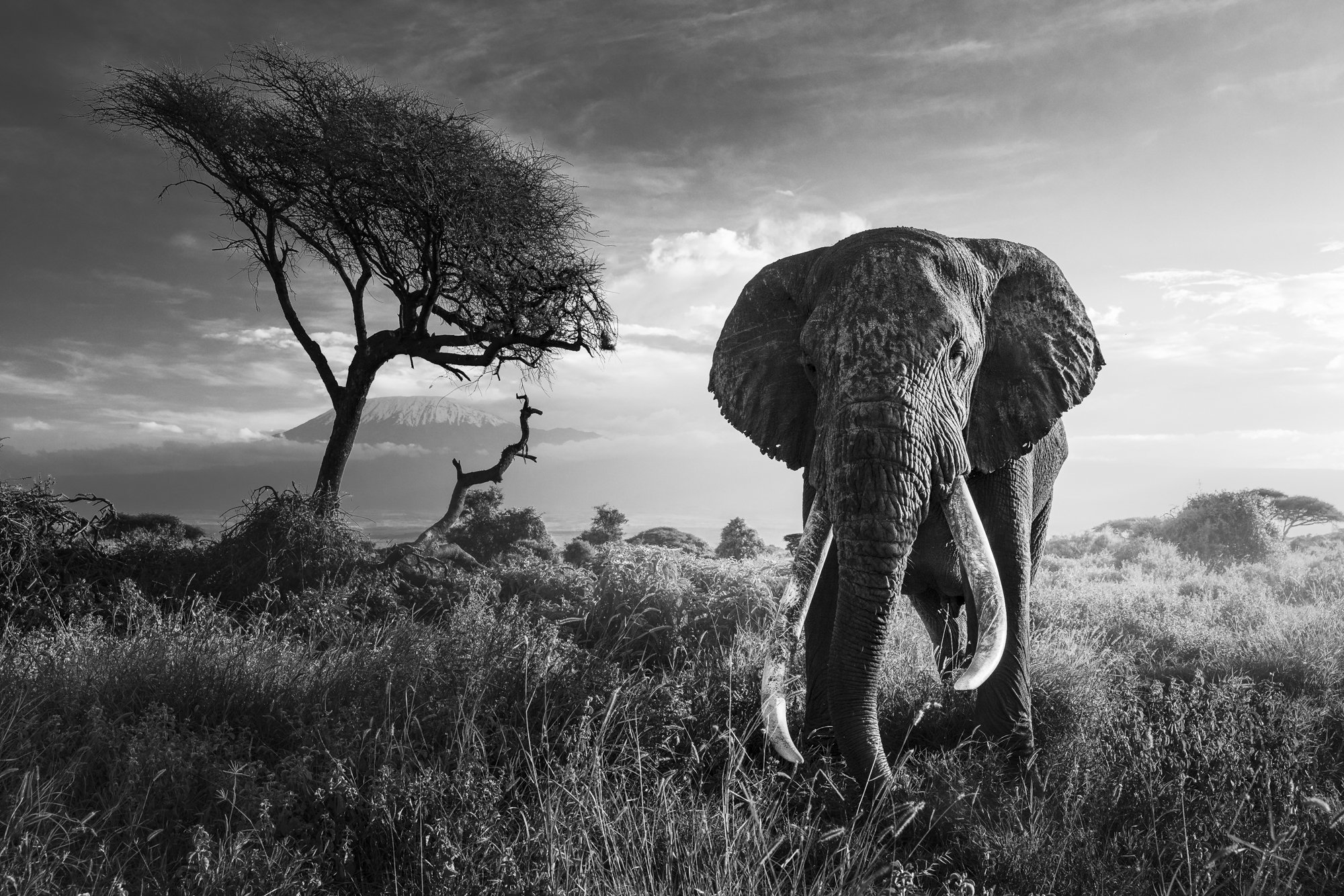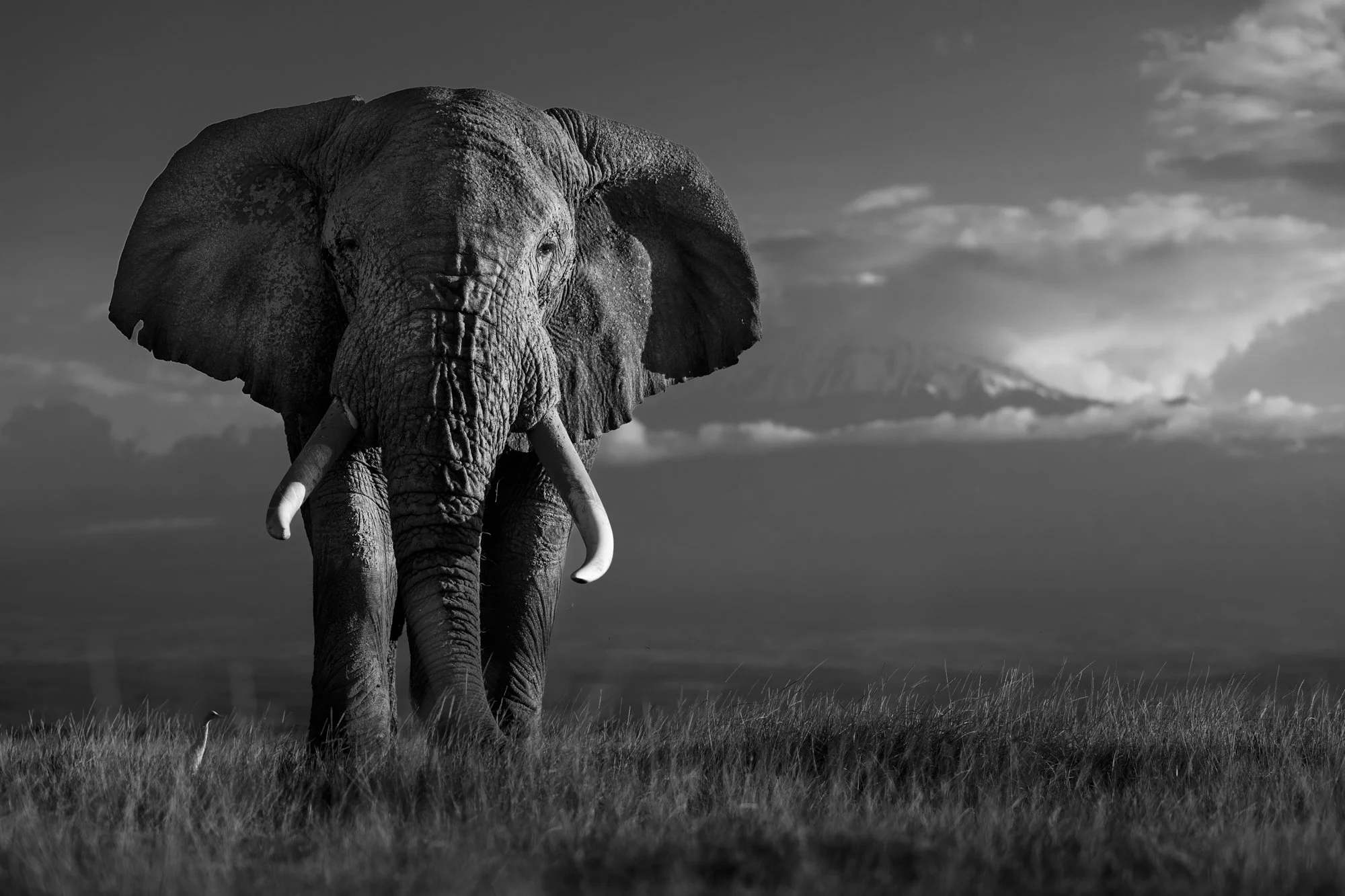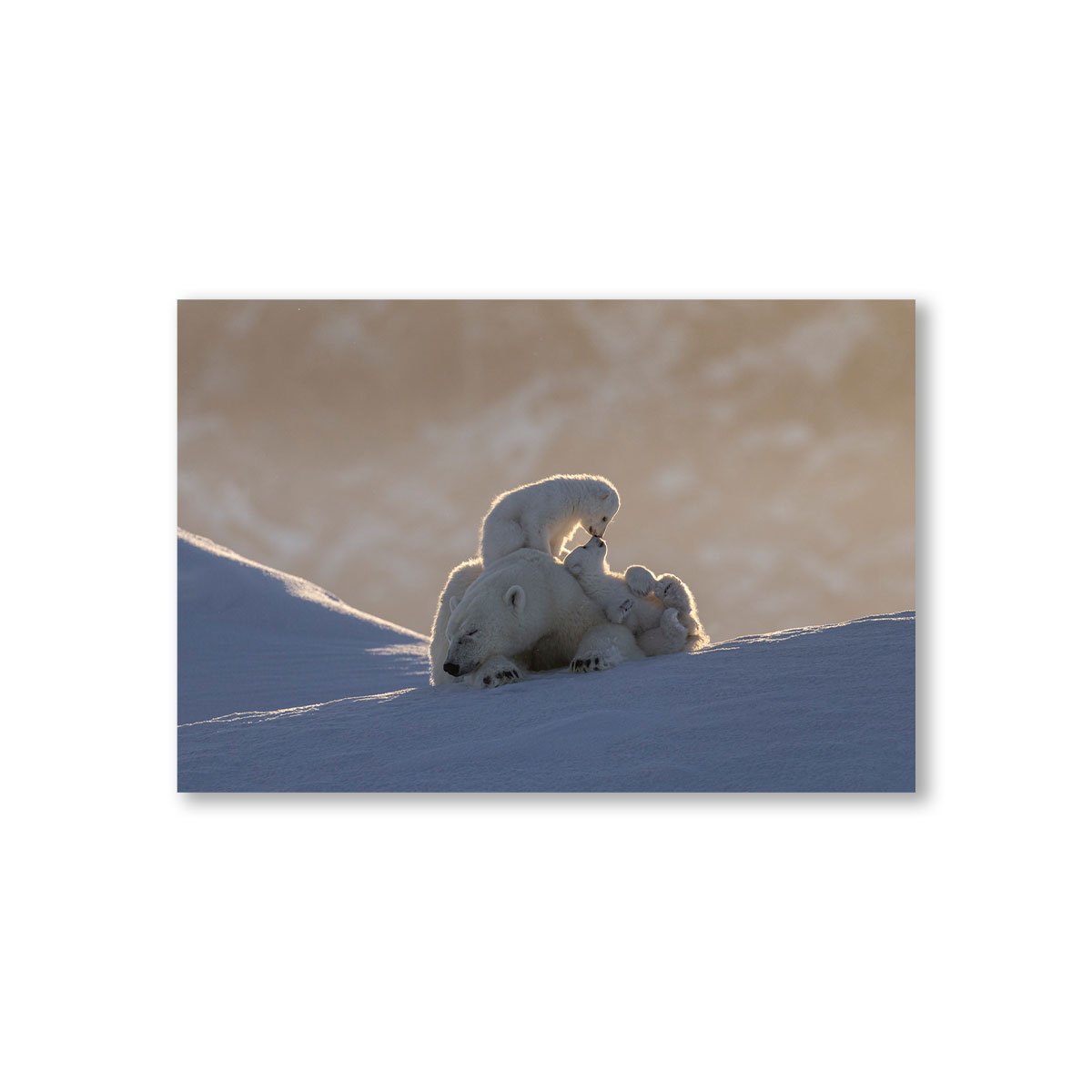TUSKER ELEPHANT PHOTOGRAPHY: ICONIC AFRICAN GIANTS OF AMBOSELI
The first time I saw Craig, the world’s most photographed Elephant
My Tusker Elephant journey
My journey with African elephant photography began with the hauntingly beautiful images in Nick Brandt’s On This Earth. Included in the book were powerful black-and-white portraits of Tusker elephants which to this day are an inspiration, and I knew I had to see Amboseli’s giants with my own eyes.
That dream came true in 2022, on a private safari led by another personal inspiration of mine and mentor, Federico Veronesi . Federico’s latest book Walk This Earth is a masterclass in Tusker elephant photography so it was important for me to learn from the best. Experiencing Amboseli through Federico’s lens was transformational—especially the moment we finally encountered Craig, the iconic Tusker, after a full day of tracking him in the Kimana Sanctuary. If you want to hear more Federico check out my interview with him here.
Since then, Amboseli has pulled me back—four times and counting. Like so many others drawn to this magical place, I’m building not just a portfolio of African elephants, but a personal connection to the African giants that roam this timeless land.
Bull Elephant dusting on dry lakebed
Guided by One of Amboseli’s Best
Over the years I have been visiting Amboseli my elephant photography has got stronger thanks to Eric Ole Kalama, one of Amboseli’s most experienced wildlife guides. Born and raised here, Eric’s understanding of elephant behavior is unparalleled. Not only that he has a deep love of the land, his people and his beloved “cows”. Over the last two decades he has worked with world-renowned photographers like Nick and Federico, as well as Tom Way and William Fortescue, plus he’s worked with crews on major elephant documentaries with the BBC and National Geographic so I couldn’t be in better hands.
Eric’s ethics match mine—we always put the elephants first. Every image shared here was taken from within a modified photography vehicle, with patience and respect. Eric knows which Tusker elephants are comfortable with a close approach and when to wait and watch. These quiet moments of trust are often the most powerful.
My camera set up in the field
A Quest for Black & White Elephant Portraits
As I transition from hobbyist to professional, my goal is to build a fine-art portfolio of black and white photographs that tell the story of Amboseli’s Tuskers—powerful yet vulnerable guardians of this ecosystem. I was delighted that my series on Amboseli Giants received an Honorable Mention in this years Mono Visions awards which recognises the best black and white photography across the globe.
I focus primarily on solo bull elephants—the true Amboseli giants—often roaming the open plains or skirting the swamps. However, when I’m close to the elephant herds, I zoom in on familial bonds and the playfulness of calves. If Kilimanjaro is visible, I go wide.
Key in my goal, besides having Eric as my guide, has been using the specifically modified Photography vehicle that Eric uses. It has no doors and a mattress which I can lie on. This combined with me going mirrorless using Canon R3 and R5 means that I can lie down and use the pop out screen to get as low to the ground when elephants are approaching. Most of the images in this blog have been photographed using this technique.
Amboseli’s Iconic Tusker Elephants
Let me introduce you to the Tusker elephants I’ve come to know—each one a towering symbol of Amboseli’s heritage and fragility.
CRAIG- THE GENTLE LEGEND
At 53, Craig is perhaps Amboseli’s most iconic Tusker elephant. His tusks nearly touch the ground, and his presence is unmatched. He is the epitome of a gentle giant. Though I’ve seen him four times, he’s always been surrounded by thick brush or accompanied by an “askari” bull. This is where a younger bull elephant will follow the older bulls who acts as mentors, as in this image taken earlier this year. This mentoring by older bulls such as Craig can be crucial for learning proper social behaviour.
So I’m still chasing that perfect, clean image—but every encounter with Craig is unforgettable
Supertusker Craig followed closely by another bull elephant
VRONSKY– THE RESILIENT WARRIOR
Vronsky first appeared to me four years ago but one of my most memorable encounters with him was when Eric and I spent the whole afternoon with him during the devastating 2023 drought. He’d lost weight, disappeared for months—but survived. Today, he’s bulked up again, and he’s a majestic and gentle elephant who is a joy to photograph. I’ve spent more time with him than any other elephant and each time I return to Amboseli one of my first questions to Eric is ”How’s Vronsky?”.
Vronsky during the drought in 2023 weathering a coming storm
TEE JAY – THE HEIR TO GREATNESS
I met Tee Jay on my first safari in 2020 and again in January. Now 37, he’s entering his prime. He’s descended from the legendary Tusker elephants Tim and Tolstoy—and he’s growing into his legacy. He’s a challenge to photograph, but when the light and landscape align, the results are magical.
Tusker Tee Jay photographed with Kilimanjaro backdrop
LIAQAT – THE RISING FORCE
At 35, Liaqat is a rising star among Amboseli’s new generation of bulls. During a recent musth, we caught a rare, dramatic moment as he paused with Kilimanjaro in the background—side-lit and statuesque.
Portrait of Bull Elephant Liaqat
EQUINOX – THE SURVIVOR WITHOUT TUSKS
Though tuskless, Equinox earns his place in this blog.
Equinox was born a twin 40 years ago & remarkably both he & his sister Eclipse survived to adulthood. To be born a twin is extremely rare, but for both to survive is rarer still. Before my first encounter with him, he broke both his tusks which could have been because of a fight or because of falling on rocks. Either way, as they were broken so high the nerve would have been exposed so this would have been extremely painful. Equinox not only had to recover but also learn how to feed without his tusks. He then had to deal with one of the worst droughts in recent memory in 2023, but thankfully he survived.
Now in his 40s, his tusks are regrowing. His resilience is extraordinary, and his story a powerful reminder of nature’s will.
If you want to know more about Equinox check out this photo story here.
Portrait of tusk less elephant Equinox
Why Amboseli’s Bull Elephants Matter
Tusker elephants in Amboseli face immense threats—from poaching and trophy hunting to human-wildlife conflict. Bulls roam wider territories, often leaving park boundaries and venturing into riskier areas, including parts of Tanzania.
Protecting these African giants is crucial. They maintain elephant social structure, mentor younger bulls, and serve as cultural icons for conservation, photography, and local communities.
Organizations like Amboseli Trust for Elephants, Big Life Foundation, and Elephant Voices are on the frontlines of protection. I’m proud to support their work through sales of my limited-edition fine art prints. Check out my Print Store to see some of my best elephant photographs.
These are not just images—they’re visual testaments to a deep connection with the Tusker elephants of Amboseli. I hope my fine art photography helps amplify their stories and ensure their survival for generations to come.
Super tusker Vronsky and his magnificent tusks
Where to stay in Amboseli
My home from home in Amboseli is Elephant Garden Camp, owned and run by Eric & his wife An Schamp. The camp is situated in its own conservancy a short drive from Kimana Gate & the main lodge and all individual bomas have incredible views of Kilimanjaro when she makes herself visible.
Every comfort is catered for, the bomas are spacious and comfortable and there is nothing better than a sundowner drink and bitings round the campfire at the end of the day.
Of all the camps I’ve stayed at in Africa this is one of my favourites and I can’t recommend it highly enough if you are visiting Amboseli.
Bull Elephant portrait
Want to know more about Bull Elephants- here are a few facts
Adult bull elephants can weigh up to 6000 kg and stand over 3.5 metres tall at the shoulder
Bulls become socially independent between the ages of 12-15, leaving the matriarchal family groups. Whilst they are often solitary as they roam the plains, they do form loose associations with other males known as “bachelor groups” that include young and middle-aged males, often learning from older bulls who act as mentors. These interactions are crucial for:
Learning proper social behavior
Practicing sparring (non-lethal fighting)
Understanding sexual cues
One of the most distinctive behaviours of adult bull elephants is musth, a condition characterized by heightened aggression and sexual rediness. Musth occurs in mature males, usually over 25 years old, and is signaled by:
Temporal gland secretion (visible dark fluid on the sides of the face)
Continuous urine dribbling
Elevated testosterone levels (up to 60 times normal)
Increased energy and movement
During musth, bulls actively seek out receptive females and dominate other males in mating competitions. Interestingly, musth is not a permanent state; it is cyclical, often lasting a few weeks to a couple of months. Dominance hierarchies among bulls determine mating access — older, more experienced bulls tend to sire more offspring due to their dominance during musth.
Older bulls play a disproportionate role in maintaining genetic health. Research from Amboseli shows that only a few dominant bulls father most of the calves during a given mating season. Their age, size, and experience enable them to:
Outcompete younger males
Choose optimal mating times
Pass on strong genes to the next generation
This selective breeding helps maintain fitness in the population. Removing these bulls (via poaching or culling) leads to a genetic bottleneck, reducing the population’s resilience to disease, drought, and environmental change.
If you want to see more of my Elephant images from Amboseli and other parts of Africa please take a look at this collection Elephants of Africa.
Thank you for taking the time to read this blog . If you are interested in knowing more let me know your questions via this link or connect with me on Instagram — I love hearing from fellow elephant lovers!
Jules

